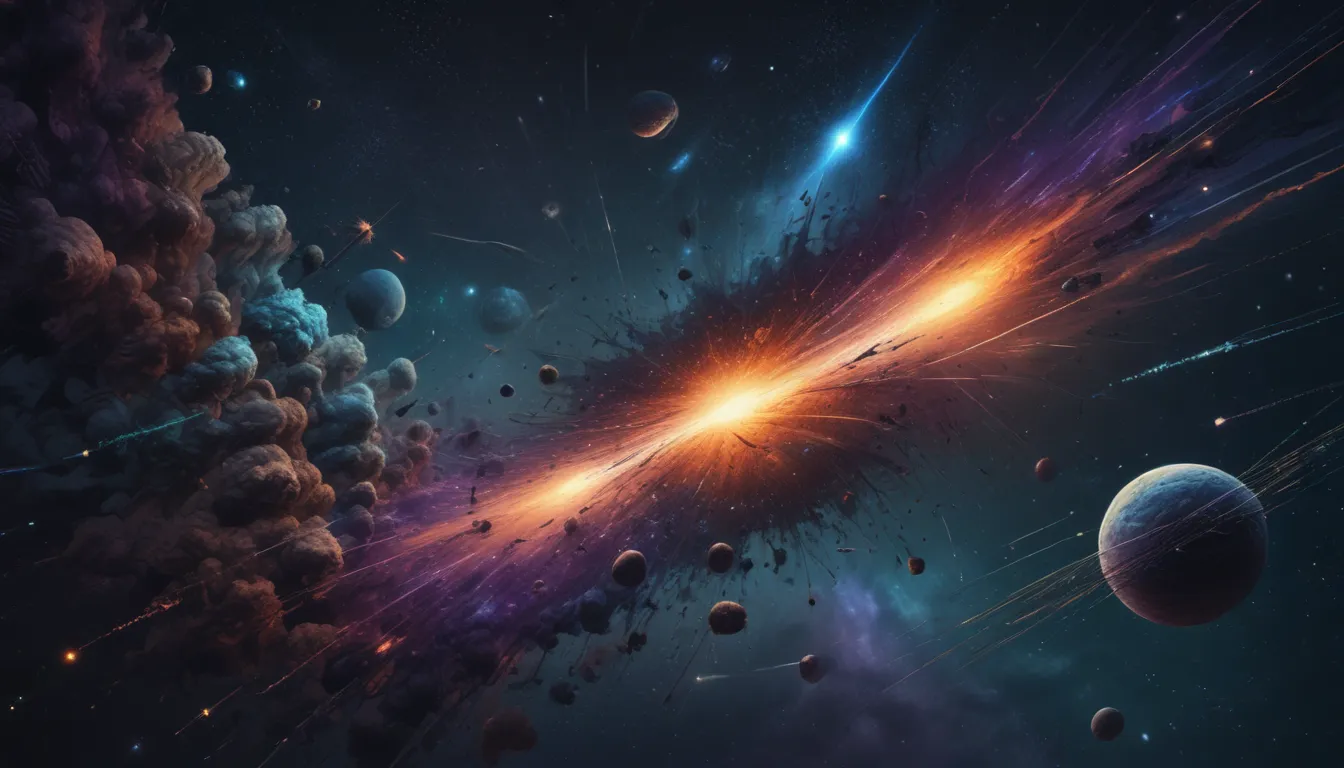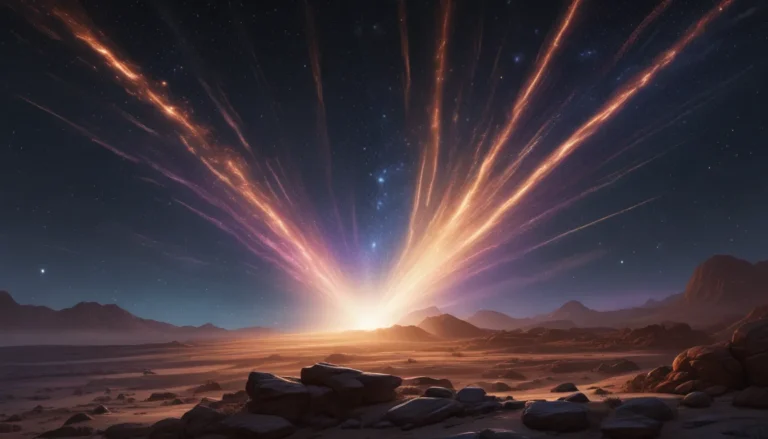The pictures we use in our articles might not show exactly what the words say. We choose these pictures to make you interested in reading more. The pictures work together with the words but don’t take their place. The words still tell you the important facts.
Micrometeoroids, seemingly inconspicuous in the vastness of space, hold a wealth of intrigue and significance beyond their diminutive size. These tiny particles, ranging from grains of sand to small pebbles, constantly bombard our planet and other celestial bodies, offering valuable scientific insights and potential hazards. In this article, we will unravel the captivating world of micrometeoroids and delve into 10 surprising facts about these cosmic intruders. From their origin and composition to their impact on space exploration and our planet, prepare to be astounded by the unexpected aspects of these minuscule cosmic wonders.
Key Takeaways:
- Micrometeoroids are celestial particles that can both cause damage and create beautiful meteors while providing crucial insights about the universe's history and composition.
- These tiny space particles play a pivotal role in shaping celestial bodies, influencing space weather, and potentially unlocking water sources in space.
Micrometeoroids: Tiny Celestial Wanderers
Micrometeoroids are small particles that zip through space at high speeds, ranging from the size of a grain of sand to a small pebble. These particles are remnants of comets, asteroids, and other celestial bodies, making them cosmic wanderers that traverse the universe.
Threat to Spacecraft and Satellites
Despite their diminutive size, micrometeoroids pose a significant threat to spacecraft and satellites. Their high velocities enable even the smallest particles to impact a spacecraft with tremendous kinetic energy, potentially leading to catastrophic consequences if not managed effectively.
The Beauty of Meteors
When micrometeoroids enter a planet's atmosphere, they ignite and create mesmerizing streaks of light known as meteors. These meteors, often enchantingly referred to as shooting stars, offer a delightful sight during meteor showers, captivating observers with their luminous trails.
Shaping of Celestial Bodies
Over billions of years, micrometeoroids have played a crucial role in shaping celestial bodies such as the Moon, Mars, and other planets. Their constant bombardment contributes to erosion, crater formation, and the overall evolution of planetary surfaces, leaving lasting impressions on these cosmic landscapes.
Valuable Scientific Insights
Micrometeoroids carry valuable information about the universe's composition and history. When these particles survive the journey through Earth's atmosphere and reach the surface, scientists can analyze them to glean insights into the formation and evolution of celestial bodies, unraveling profound mysteries hidden within these tiny remnants.
Impact Craters and Evidence
Despite their size, micrometeoroids possess enough speed and energy to create impact craters on celestial bodies' surfaces. These craters range from small pits to larger structures, serving as tangible evidence of the intense bombardment these cosmic entities endure over time.
Influence on Space Weather
Interacting with a planet's atmosphere, micrometeoroids release electrically charged particles called ions, contributing to space weather dynamics. These ions, along with other space weather phenomena, shape the upper atmosphere and play a role in the formation of dazzling auroras that grace the night skies.
Detection Methods
Scientists employ various techniques to detect and study micrometeoroids from Earth, including radar and optical observations, as well as specialized spacecraft dedicated to capturing and analyzing these minuscule particles. These methods enable researchers to gather valuable data on these cosmic travelers and enhance our understanding of their behavior.
Potential Source of Water in Space
Recent studies suggest that micrometeoroids could serve as a vital source of water in space. It is theorized that these particles carry small amounts of water molecules, opening up possibilities for extracting and utilizing water resources during future space exploration missions, demonstrating the multifaceted role of micrometeoroids in cosmic phenomena.
Influence on Planetary Habitability
The relentless rain of micrometeoroids on a planet's surface can influence its climate and potential for hosting life. Impact events, atmospheric heating, and chemical reactions induced by these particles contribute to shaping the habitability of other worlds, showcasing the intricate interplay between cosmic phenomena and planetary conditions.
Conclusion: Unveiling Cosmic Secrets
In conclusion, micrometeoroids stand as captivating cosmic phenomena that intrigue scientists and space enthusiasts alike with their hidden mysteries. From their origins in comets and asteroids to their profound impact on spacecraft and planetary surfaces, micrometeoroids offer valuable insights into the intricate workings of our vast universe. As technology advances, our exploration of micrometeoroids continues to evolve, providing an increasingly detailed understanding of these cosmic remnants and unraveling essential information about the formation of our solar system and potential hazards they pose.
FAQs:
Q: What are micrometeoroids?
A: Micrometeoroids are tiny particles originating from comets, asteroids, and other celestial bodies, ranging from grains of sand to small pebbles, traveling through space at high speeds and impacting various objects.
Q: Where do micrometeoroids come from?
A: Micrometeoroids originate from sources within our solar system, often as remnants of comets, fragments of asteroids, or byproducts of collisions between larger celestial bodies.
Q: What is the significance of studying micrometeoroids?
A: Studying micrometeoroids offers critical insights into the formation and evolution of our solar system, shedding light on planetary formation processes and helping us assess the risks they pose to spacecraft and planetary atmospheres.
Q: How do micrometeoroids affect spacecraft?
A: Micrometeoroids pose a threat to spacecraft due to their high velocities. Impact from these particles can damage spacecraft surfaces, potentially leading to equipment failures or jeopardizing astronaut safety.
Q: Are micrometeoroids dangerous to Earth?
A: While most micrometeoroids disintegrate upon entering Earth's atmosphere, larger particles can reach the surface, causing localized damage through rare impact events. However, Earth's protective atmosphere mitigates the number and size of micrometeoroids reaching the surface.
Micrometeoroids, though small in size, wield immense influence on our cosmic understanding and exploration. As we peel back the layers of mystery surrounding these celestial wanderers, we uncover profound insights into the universe's past, present, and future. Embrace the awe-inspiring realm of micrometeoroids and embark on a journey of discovery that illuminates the intricate tapestry of our cosmos.






